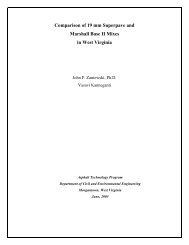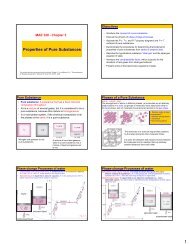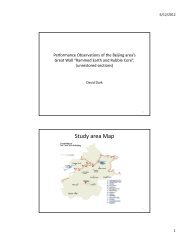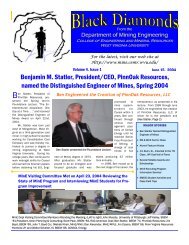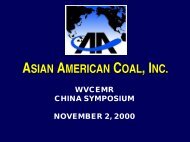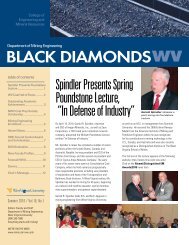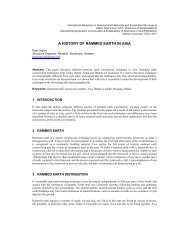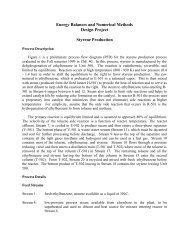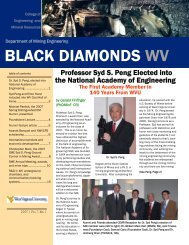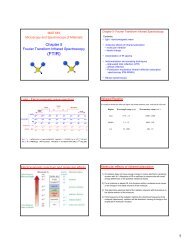Comparison of 9.5 mm SuperPave and Marshall Wearing I Mixes in ...
Comparison of 9.5 mm SuperPave and Marshall Wearing I Mixes in ...
Comparison of 9.5 mm SuperPave and Marshall Wearing I Mixes in ...
Create successful ePaper yourself
Turn your PDF publications into a flip-book with our unique Google optimized e-Paper software.
40mouth. This jar rests on a holder positioned over a 100 mL cyl<strong>in</strong>der. The entire device is placed<strong>in</strong>side <strong>of</strong> a pan used to reta<strong>in</strong> f<strong>in</strong>e aggregate particles.Sampl<strong>in</strong>g for these tests was conducted accord<strong>in</strong>g to ASTM D 75 <strong>and</strong> ASTM C 702 (ASTM, 2000).Wash<strong>in</strong>g, siev<strong>in</strong>g <strong>and</strong> dry<strong>in</strong>g was done <strong>in</strong> accordance with ASTM C 117 <strong>and</strong> ASTM C 136. Oncethis was completed the sample was weighed out. Method A specifies proportions <strong>of</strong> fourdifferent aggregate sizes as:SieveWeight (g)#16 44#30 57#50 72#200 17Total 190The bulk dry specific gravity was also needed to complete the calculations for determ<strong>in</strong><strong>in</strong>g theuncompacted voids content. This was determ<strong>in</strong>ed by tak<strong>in</strong>g a larger sample <strong>of</strong> the sameproportions shown above <strong>and</strong> test<strong>in</strong>g them accord<strong>in</strong>g to ASTM C 128, St<strong>and</strong>ard Test Method forSpecific Gravity <strong>and</strong> Absorption <strong>of</strong> F<strong>in</strong>e Aggregate.The test<strong>in</strong>g procedure began with mix<strong>in</strong>g the test sample until it was homogeneous. The jar <strong>and</strong>funnel were then placed <strong>in</strong> the st<strong>and</strong> <strong>and</strong> the 100 mL measure placed directly under the funnelopen<strong>in</strong>g. The sample was placed <strong>in</strong>to the jar <strong>and</strong> leveled; a f<strong>in</strong>ger was placed at the tip <strong>of</strong> thefunnel to reta<strong>in</strong> the s<strong>and</strong>. The f<strong>in</strong>ger was then removed <strong>and</strong> allow<strong>in</strong>g the sample to fall freely<strong>in</strong>to the measur<strong>in</strong>g cyl<strong>in</strong>der. After the funnel empties, excess f<strong>in</strong>e aggregate was struck <strong>of</strong>f thecyl<strong>in</strong>der. The measure was then weighed to determ<strong>in</strong>e the mass <strong>of</strong> f<strong>in</strong>e material conta<strong>in</strong>ed <strong>in</strong>the measure. This process was run twice for each mixture <strong>of</strong> f<strong>in</strong>e material. The uncompactedvoid content is computed as:UFVGsb100 [4.1]VWhere,U = uncompacted voids, percent, <strong>of</strong> the material.V = volume <strong>of</strong> measure, mL,



